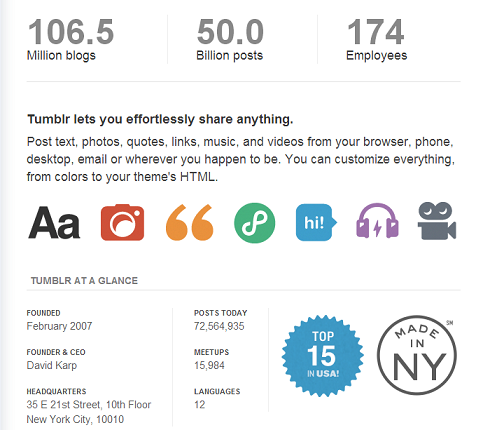A micro-blogging platform, a great way to save cost for start up businesses
May 9, 2013 45 Comments
What does Lightweight Models & Cost-Effective Scalability means in Web2.0?
In the web 1.0 era, online start-up businesses do not know about scalability in business models or technology which helps to deliver products to the market faster and cheaper without sacrificing future growth. All these can be depicted by the use of web 2.0 which qualifies in a strategic move that can be done for a fraction of the initial price. With the olden web 1.0, traditional cost and risk are relatively high. A huge amount of initial capital is required which leads to a longer reach to foresee a good return on investments.
“Most widely deployed web service is because of its simplicity, while the complex corporate web services stacks have yet to achieve wide deployment’ –Tim O’Reilly
In relation to the above quotation, any start-up business model should be as simple as possible to attain a high possible success rate. It is recommended to utilise a scalable business model that allows one to start small with a small budget but gradually increase costs as revenue is increased. An online business without a big budget will certainly be a cost-effective approach. If the business fails, there is no large amount of capital that is being lost. Another reason to start an online business is one would recognise a quicker return on investments as the capital is low and after the business products has been marketed and revenue has been generated.
Tumblr
Tumblr is a micro-blogging platform that receives over 15billion page views/month thanks to David Karp, the founder for Tumblr. Tumblr is a young company that has a lot of opportunity growth. Recently, the platform has been ramping up its content curation efforts, building out its fashion community and expressing plans to build out communities in other entertainment sectors as well. As Tumblr continues to facilitate content curation and help its users discover more of what it has to offer, we can see it becoming a ripe playing field for business of all stripes.
Tumblr is a great platform to enhance ones business brand’s presence and drawing more customers into the fold. It visually presents an image of what the company is and who is ‘behind the scene’, as well as what products to offer.
Compare to WordPress, Tumblr is super simple. It is easy to set up and customise and within minutes, posting is easily reachable. Tumblr is one of the most visually appealing and user-friendly platforms. It is an effective way to build community or small business online. With a little modification of HTML wizadry, one can alter Tumblr themes by adding widgets and sidebars, etc.
How does Tumblr contributes to the pattern: ‘Lightweight Models & Cost-Effective Scalability’?
Tumblr followed some best practices that help to minimise start-up costs. It uses available tools such as API. Tumblr uses LAMP (a combination of free, open source software, such as Linux, Apache HTTP Server, MySQL and PHP/Perl/Python, to build a viable general purpose web server).
Tumblr did not manage their own servers and are not responsible for backups. Instead, they acquire a cost-effective solution of outsourcing their storage for their media to Amazon S3 service while tumblr themselves did the development for their platform. Tumblr’s decision to reach out to Amazon S3 is that they have the intention of creating a large user-base that requires the building of platform with scalability in mind. The growth in user-base in Tumblr over the years had made Amazon the need to enlarge the storage space.
Tumblr has self-service accounts which increases scalability where users are able to manage their accounts freely. This means that Tumblr are able to work on the main platform only rather than managing individual user accounts. Hence, saving cost (small expertise needed to maintain platform only).
In regards to Tumblr’s scalability in its revenue model, it generates most of its revenue through organisation and individuals who participated alongside with the Union Square Ventures (in an 85 million dollar investment round in 2011).
The downsides of Tumblr
Compare to WordPress, Tumblr has lesser control over formatting which might be a hassle for some who alters a lot. Tumblr doesn’t allow self hosting where when one host your own site and in which Tumblr has issues where the site is required to be shut down momentarily, your site will go down with it.
Other Links:


